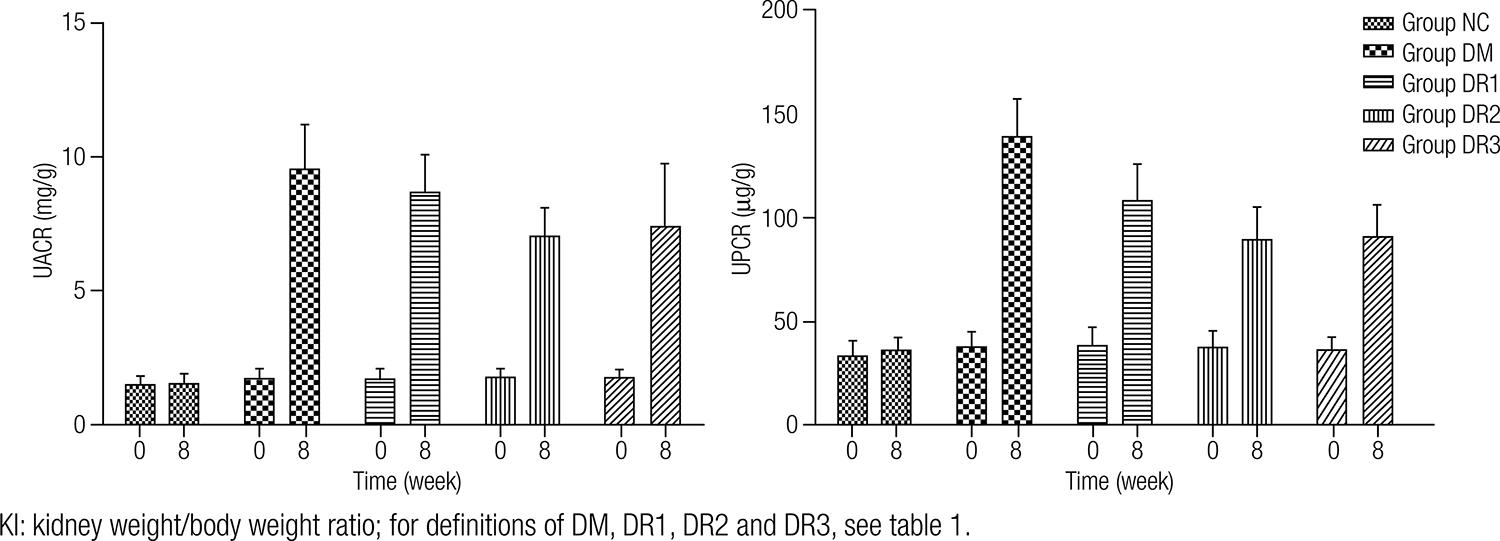Objective:
We sought to test the effect of different dosages of pioglitazone (PIO) on the glomerular expression of podocalyxin and urinary sediment podocalyxin excretion and to explore the potential renoprotective mechanism.
Materials and methods:
Type 1 diabetes induced with streptozotocin (65 mg/kg) in 36 male Sprague-Dawley rats were randomly allocated to be treated with vehicle or 10, 20, 30 mg/kg/d PIO respectively for 8 weeks. Eight rats were enrolled in the normal control group.
Results:
At 8th week, rats were sacrificed for the observation of kidney injury through electron microscope. Glomerular podocalyxin production including mRNA and protein were determined by RT-PCR and immunohistochemistry respectively. Levels of urinary albumin excretion and urinary sediment podocalyxin, kidney injury index were all significantly increased, whereas expression of glomerular podocalyxin protein and mRNA were decreased significantly in diabetic rats compared to normal control. Dosages-dependent analysis revealed that protective effect of PIO ameliorated the physiopathological changes and reached a peak at dosage of 20 mg/kg/d.
Conclusion:
PIO could alleviate diabetic kidney injury in a dose-dependent pattern and the role may be associated with restraining urinary sediment podocalyxin excretion and preserving the glomerular podocalyxin expression.
Diabetic nephropathy; podocalyxin; pioglitazone; podocyte; proteinuria






